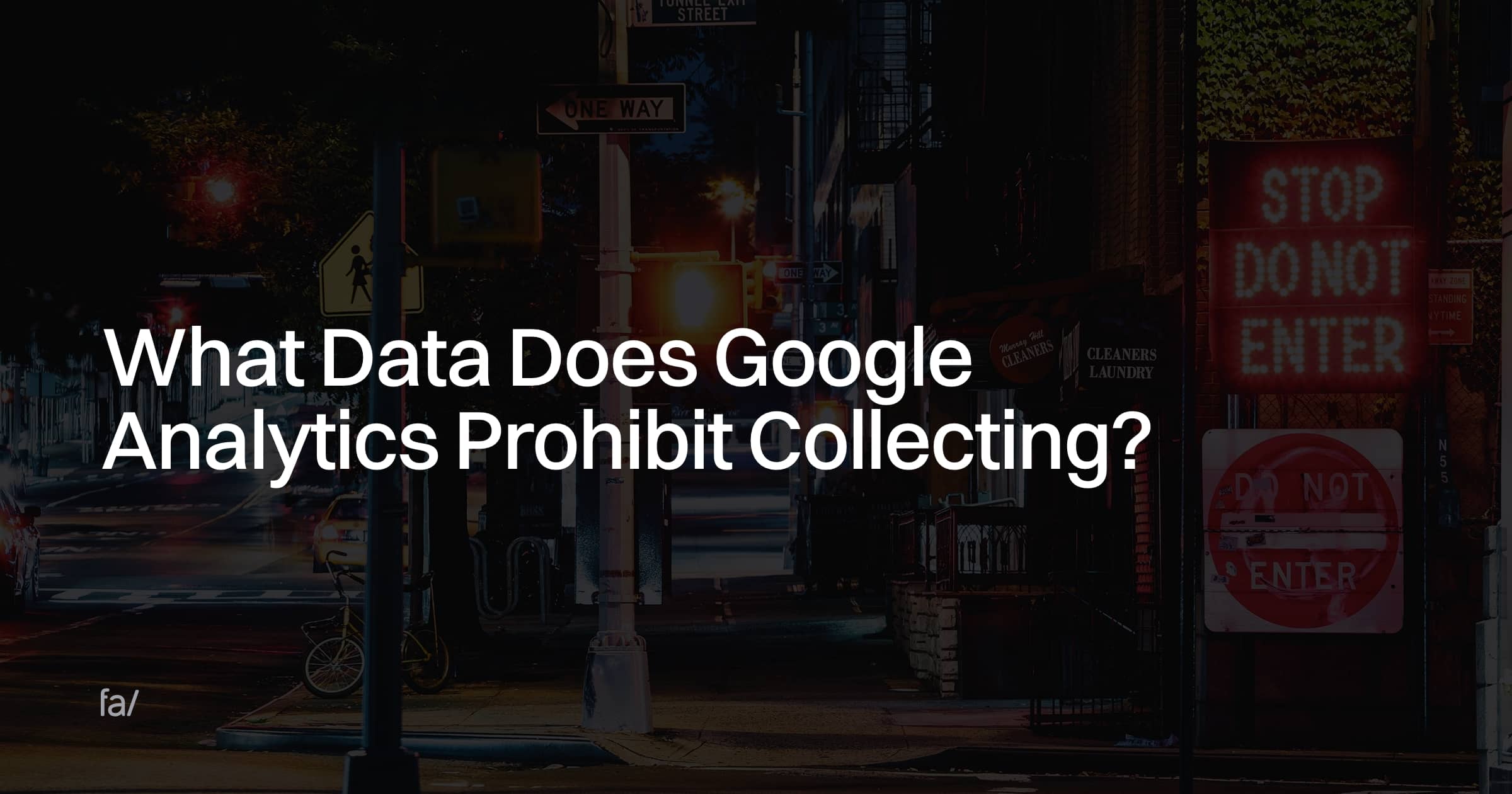Google Analytics Guidelines: What Data Does Google Analytics Prohibit Collecting?
Google Analytics Guidelines: What Data Does Google Analytics Prohibit Collecting?
Blog Article
Browsing the Intricacies of Data Collection Limitations in Google Analytics: What You Required to Know
Below its seemingly uncomplicated interface lie intricacies that can affect the accuracy and reliability of the information it offers. Understanding the details of data collection constraints in Google Analytics is vital for making informed choices based on the insights derived from the system.
Data Disparities in Google Analytics
Sometimes, information disparities might emerge in Google Analytics, requiring an extensive understanding of the platform's ins and outs to efficiently resolve and remedy these disparities. These inconsistencies can stem from different sources, such as application issues, data sampling, filters, or perhaps bot website traffic. One common factor for data disparities is disparities between data gathered via JavaScript tracking code and information imported from other sources like Google Ads or Browse Console.
To resolve these inconsistencies, it is critical to very first conduct a detailed audit of your tracking configuration. Validate that the monitoring code is appropriately executed on all web pages, look for any kind of filters that might be modifying the data, and guarantee that there are no redirects or other technological concerns conflicting with information collection. Additionally, familiarize yourself with common mistakes, such as cross-domain monitoring mistakes or misconfigured objectives.
Monitoring Challenges and Solutions
Given the complexities of data disparities that can emerge in Google Analytics, dealing with tracking difficulties and applying reliable solutions becomes critical for making sure accurate and dependable information evaluation. One common monitoring obstacle is properly tracking cross-device and cross-platform customer communications. Individuals today involve with web sites and apps throughout numerous tools and systems, making it testing to associate actions to a single user properly. To overcome this, executing user ID tracking can help connect interactions throughout various devices under one individual identifier, offering a more holistic sight of user actions.
Another monitoring challenge comes from ad blockers and personal privacy guidelines, which can hinder the collection of precise data (What Data Does Google Analytics Prohibit Collecting?). Solutions to this consist of executing server-side tracking, which bypasses client-side restrictions, and respecting individual privacy preferences by supplying clear opt-in systems for information collection

Understanding Experiencing in Reports
Tasting in reports offers an approach for assessing big datasets successfully while maintaining statistical value. In Google Analytics, sampling happens when the quantity of data quized exceeds a specific threshold, causing the system assessing only a part of the information to give insights. While tasting can speed up report generation and lower handling demands, it is vital to recognize its implications on the precision and dependability of the outcomes.
When dealing with tasted information, it's essential to think about the prospective margin of mistake that might emerge because of evaluating article just a part of the article source complete dataset. The accuracy of the insights obtained from tasted records might differ, and users ought to translate the findings with care, especially when making data-driven decisions based on these reports.
To navigate sampling in Google Analytics successfully, customers can discover alternatives such as readjusting the tasting level, utilizing custom-made report configurations, or leveraging Google Analytics 360 for higher data limits and more precise coverage capacities. By recognizing the nuances of sampling in reports, users can make educated decisions and draw reliable conclusions from their data analysis efforts.
Impact of Cookie Removal on Information

In addition, cookie removal can alter demographic and rate of interest data, as Google Analytics counts on cookies to categorize users based upon their searching patterns. Without this details, marketing professionals may struggle try these out to create targeted projects that resonate with their audience. To reduce the impact of cookie removal, services can motivate users to opt-in for information monitoring, utilize various other monitoring techniques like user IDs, and routinely monitor information inconsistencies to guarantee information stability in Google Analytics.
Enhancing Data Precision With Filters
To enhance the precision and integrity of data in Google Analytics, implementing filters is a critical method for enhancing information accuracy. Filters make it possible for customers to sort via and fine-tune the information gathered, ensuring that accurate and only pertinent info is consisted of in the analysis. By establishing up filters, users can leave out internal web traffic, spam referrals, or any type of various other unimportant information that might alter the outcomes. This process aids in providing a much more accurate depiction of customer behavior on a web site, leading to better-informed decision-making.
Filters not only assist in leaving out undesirable information but also permit the personalization of sights to concentrate on details segments or patterns of user interactions. Filters can be used to leave out or consist of website traffic from certain geographical places, gadgets, or certain website pages. This level of customization enhances the precision of the information being examined, supplying a lot more useful understandings for enhancing web site performance and advertising strategies. Finally, utilizing filters in Google Analytics is vital for improving data precision and making certain that educated choices are made based on reputable info.
Verdict
To conclude, navigating the complexities of information collection restrictions in Google Analytics requires a deep understanding of information inconsistencies, tracking challenges, sampling in records, the impact of cookie deletion, and using filters to improve data precision. By attending to these challenges and making use of proper solutions, companies can ensure the reliability and accuracy of their data analysis for notified decision-making.
One common factor for information disparities is disparities between data collected via JavaScript tracking code and information imported from other resources like Google Ads or Browse Console. What Data Does Google Analytics Prohibit Collecting?.
Provided the intricacies of information disparities that can emerge in Google Analytics, attending to monitoring challenges and implementing effective remedies comes to be critical for making sure accurate and reputable data evaluation. In Google Analytics, tasting occurs when the quantity of data queried goes beyond a certain limit, leading to the system analyzing only a section of the information to provide insights. To minimize the influence of cookie deletion, organizations can urge customers to opt-in for data tracking, use various other monitoring approaches like customer IDs, and frequently keep an eye on data inconsistencies to make sure information stability in Google Analytics.

Report this page